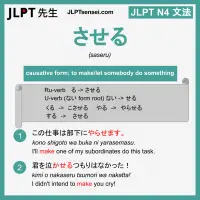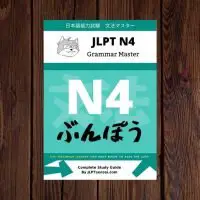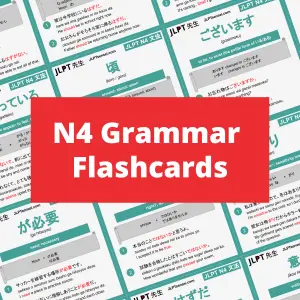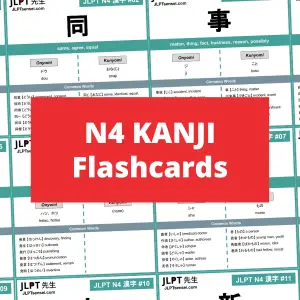Learn Japanese grammar: させる (saseru). Meaning: causative form. This can mean either:
- to make somebody do something.
- to let somebody do something.
Causative verbs are called 使役動詞 (shieki doushi) in Japanese.
Causative form is called 使役形 (shieki kei), and a causative statement is called 使役文 (shieki bun).
Causative form conjugation samples
Ru-verbs
- 食べる -> 食べさせる (tabesaseru)
- 出る -> 出させる (desaseru)
- 寝る -> 寝させる (nesaseru)
- 起きる -> 起きさせる (okisaseru)
- 着る -> 着させる (kisaseru)
U-verbs
- 聞く -> 聞かせる (kikaseru)
- 待つ -> 待たせる (mataseru)
- 飲む -> 飲ませる (nomaseru)
- 買う -> 買わせる (kawaseru)
- 話す -> 話させる (hanasaseru)
Meaning 1) to make somebody do something
子どもに勉強をさせる。
kodomo ni benkyou o saseru.
To make children study.
Meaning 2) to let somebody do
食べさせてください。
tabe sasete kudasai
Please let me to eat.
Which meaning is correct?
You will often have to guess or assume which meaning is correct based on the context.
Example) To marry
結婚させる。
kekkon saseru
Meaning 1) to make marry
Meaning 2) to allow to marry

Click the image to download the flashcard.
Download all N4 grammar flashcards.

Download our complete
JLPT N4 Grammar Master E-book.
Access ALL extra downloads, ebooks, and study guides by supporting JLPT Sensei on Patreon.
させる - Example Sentences 例文
Each example sentence includes a Japanese hint, the romaji reading, and the English translation.
Click the below red button to toggle off and and on all of the hints, and you can click on the buttons individually to show only the ones you want to see.
Example #1
母は私に自分の部屋を片付けさせた。
Example #2
この仕事は部下にやらせます。
Example #3
君を泣かせるつもりはなかった!
Example #4
僕にやらせてください
Example #5
息子はアニメを見たがっていますが、宿題が終わっていないので、見させません。
Vocabulary List 語彙
| Kanji 漢字 | Kana カナ | English 英語 |
|---|---|---|
| 生徒 | せいと | student |
| 勉強する | べんきょう | to study |
| 食べる | たべる | to eat |
| 結婚する | けっこん | to marry |
| 母 | はは | mother |
| 私 | わたし | I |
| 自分の | じぶんの | one's own |
| 部屋 | へや | room |
| 片付ける | かたづける | to clean up; organize |
| 仕事 | しごと | work |
| 部下 | ぶか | subordinate |
| 君 | きみ | you |
| 泣く | なく | to cry |
| 僕 | ぼく | I |
View all JLPT N4 Vocabulary Lessons

View all JLPT N4 Grammar Lessons
JLPT N4 Study Guide
JLPT N4 Grammar Master [e-book]
Complete Study Guide
This e-book includes every grammar point you need to know in order to pass the JLPT N4, with detailed usage notes and numerous example sentences.
Pages: 293.
Grammar lessons: 131.




